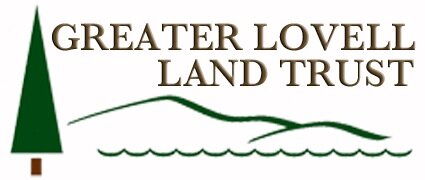Did you know you can launch a canoe or kayak into the Kezar River via the GLLT’s Kezar River Reserve located across from the Wicked Good Store? If choosing to do so, my recommendation is that you drive all the way in, park by the kiosk, and carry or drag your boat down the “road” to the river. And do know that some sort of boat shoe will improve the experience as the launch area is rather mucky. But oh, it is so worth it.
Once out on the water, even if a storm is trying to brew and the wind is blowing, there are plenty of “islands” to pause and watch the world. In fact, so much is happening here, that you’ll wish your head could swivel on your neck so you could take it all in.
One of the plants that grows abundantly here is the Scouring Rush, which isn’t a rush even if it is round all the way to the ground. Instead, this equisetum is a a horsetail. Horsetails are closely related to ferns and both were common during the Carboniferous period (280-345 million years ago), when they would have been tree size.
Upon the horsetails others of pre-historic tradition pause—like the Chalk-fronted Corporal dragonfly.
Dot-tailed Whiteface dragonflies also find the upright structures to be the perfect place to rest.
On the western side of the river, Tiger Swallowtail butterflies suck nectar from high bush blueberry shrubs.
Meanwhile, on the eastern side, female American Rubyspot damselflies wait for a date. Note the white spot at the tip of the wing—for the jeweling damselflies the spot indicates the specimen is a female.
Upon the same shrub male River Jewelwings with their two-toned wings do the same—wait for a mate that is.
And in the middle of the river . . . Painted Turtles bask in the sun upon rocks and old stumps such as this one.
Another old stump shows off its shallow root system that zigs and zags from the past . . . and still does.
Meanwhile, life continues, or at least the male Familiar Bluet in front hopes that he can convince the damsel of his dreams to form a love ring and contribute to the future of their species.
In the midst of all the action, which includes not only what I’ve shown you, but also a beaver, many small birds, wood ducks, bull, green, and tree frogs chorusing, and fish jumping, an eagle flies in.
It seems that many times when I visit this GLLT property, whether by land or water, an eagle also arrives. It too, can’t swivel its neck, but in the snap of a finger it did change its orientation to watch the action below.
Part of the action includes a Four-spotted Skimmers, posing as is its habit, atop the equisetum (Scouring Rush).
And then, as life would have it, I spot one struggling in the water. And so I do what seems the right thing to do and scoop it up onto the kayak paddle. Its wings bent; its body wet.
I, who tell people to leave wildlife alone, offer a hand. And the Four-spotted accepts.
I try to put the dragonfly onto the boat because the time has come to paddle back to the launch, but he decides otherwise. My body offers the warmth he needs to dry off.
And so for about a quarter mile as I paddle against the wind, the Four-spotted sits upon my pointer finger. I feel like I’m drinking a cup of tea with my pinky stuck out in proper etiquette, but in dragonfly etiquette it was my pointer providing a place for the wee fellow to occasionally flutter his wings as members of his family will do to stay warm. Back at the boat launch, he flies from one finger to another, and transferrs from one hand to another and then . . . suddenly he’s off. And on to his next adventure.
Kezar Life . . . takes a variety of forms. Visit the reserve to see for yourself.

















